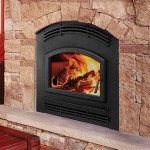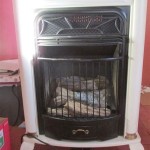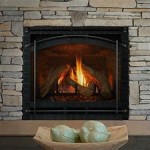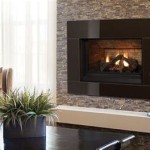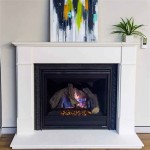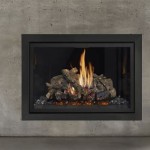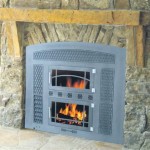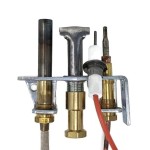Unvented Gas Fireplaces: Understanding Safety Considerations
Unvented gas fireplaces, also known as ventless gas fireplaces, represent a category of heating appliances that exhaust combustion byproducts directly into the living space, rather than through a chimney or vent. This design offers certain advantages, such as simplified installation and potentially higher efficiency compared to vented models. However, the absence of external venting necessitates a thorough understanding of the associated safety considerations to mitigate potential risks.
The operation of an unvented gas fireplace relies on a carefully calibrated combustion process designed to minimize the production of harmful emissions. The primary byproducts of natural gas or propane combustion are carbon dioxide (CO2) and water vapor. Under ideal conditions, a properly functioning unit will produce extremely low levels of carbon monoxide (CO), a colorless, odorless, and poisonous gas. Maintaining these low levels is predicated on regular maintenance, proper installation, and adherence to manufacturer specifications.
It is crucial to note that unvented gas fireplace safety is not solely dependent on the appliance itself. Factors such as room size, ventilation, and the overall health of the occupants play a significant role in determining the potential for adverse effects. Improper usage or neglect can quickly compromise the safety profile of these appliances.
Carbon Monoxide (CO) Monitoring and Prevention
The most significant hazard associated with unvented gas fireplaces is the potential for carbon monoxide (CO) poisoning. CO interferes with the body's ability to transport oxygen, leading to symptoms ranging from headaches and nausea to unconsciousness and death. Because CO is undetectable by human senses, the installation of functioning CO detectors is absolutely essential in any dwelling where an unvented gas fireplace is used. These detectors should be located in accordance with manufacturer recommendations, typically on each level of the home and near sleeping areas.
Furthermore, regular testing of CO detectors is paramount. Batteries should be replaced at least twice a year, or more frequently if the detector indicates a low battery. The detector itself should be replaced every five to seven years, or as specified by the manufacturer, as the sensing technology can degrade over time. Familiarizing oneself with the symptoms of CO poisoning is also crucial. Early symptoms, such as headaches, dizziness, and flu-like symptoms without a fever, should prompt immediate ventilation of the area and seeking medical attention.
Proper installation is equally critical in minimizing CO risk. Only qualified professionals should install and service unvented gas fireplaces, ensuring that the appliance is correctly connected to the gas supply and that the regulator is functioning properly. Modifications to the appliance or tampering with the safety features can significantly increase the risk of CO emissions.
Adequate Ventilation and Room Size Requirements
Unvented gas fireplaces consume oxygen during combustion. Inadequate ventilation can lead to a depletion of oxygen levels in the room, potentially causing discomfort or, in extreme cases, asphyxiation. Furthermore, insufficient ventilation can hinder the complete combustion of the fuel, leading to increased CO production. Therefore, minimum room size requirements and ventilation guidelines must be strictly adhered to.
Manufacturers typically specify the minimum room size required for safe operation of their unvented gas fireplace models. These requirements are based on the BTU (British Thermal Unit) output of the appliance and the amount of oxygen it consumes. Operating an unvented gas fireplace in a space smaller than the specified minimum can lead to a dangerous build-up of combustion byproducts and oxygen depletion.
Even when the room size is adequate, providing a source of fresh air is essential. This can be achieved through natural ventilation, such as opening a window or door slightly, or through mechanical ventilation, such as a whole-house ventilation system. The amount of ventilation required will depend on the BTU output of the fireplace and the tightness of the building envelope. Consult the manufacturer's instructions and local building codes for specific ventilation requirements.
Regular Maintenance and Inspection
Like any gas-burning appliance, unvented gas fireplaces require regular maintenance and inspection to ensure safe and efficient operation. Neglecting maintenance can lead to malfunctions that increase the risk of CO emissions, gas leaks, or fire hazards.
A qualified technician should inspect and service the unvented gas fireplace at least once a year. This inspection should include checking the burner for proper combustion, cleaning the burner and air intake, inspecting the gas lines for leaks, and verifying the functionality of the safety shut-off mechanisms. Any worn or damaged parts should be replaced immediately.
Homeowners should also perform regular visual inspections of the fireplace. Look for signs of soot buildup, rust, or corrosion. If any abnormalities are observed, contact a qualified technician for further inspection and repair. Never attempt to repair an unvented gas fireplace yourself unless you are a qualified professional.
It is important to only use the type of fuel specified by the manufacturer (natural gas or propane). Using the wrong fuel can lead to incomplete combustion and increased CO production. Never burn wood or other materials in an unvented gas fireplace, as this can damage the appliance and create a serious fire hazard.
By understanding these key safety considerations and adhering to manufacturer guidelines, the risks associated with unvented gas fireplaces can be significantly minimized, allowing for the safe and efficient enjoyment of supplemental heat.

Are Vent Free Gas Fireplaces Safe Ventless
.aspx?strip=all)
Ventless Fireplaces Explained Safety Of Vent Free Fires

Vented Vs Ventless Gas Fireplace Logs
:max_bytes(150000):strip_icc()/ventless-gas-fireplaces-4160746-hero-f9d4bdcd9bd446eb84406de306f790ba.jpg?strip=all)
How To Pick Out A Ventless Gas Fireplace

Vented Vs Ventless Gas Logs What S The Difference

A Ventless Gas Fireplace Doesn T Belong In Your Home Greenbuildingadvisor

What Is A Ventless Gas Fireplace Experts In Gaithersbutg Md

Vent Free Gas Log Safety Albany Ny Northeastern Fireplace

Ventless Gas Fireplace Propane

Considering A Ventless Gas Fireplace Here S What You Need To Know Bob Vila

